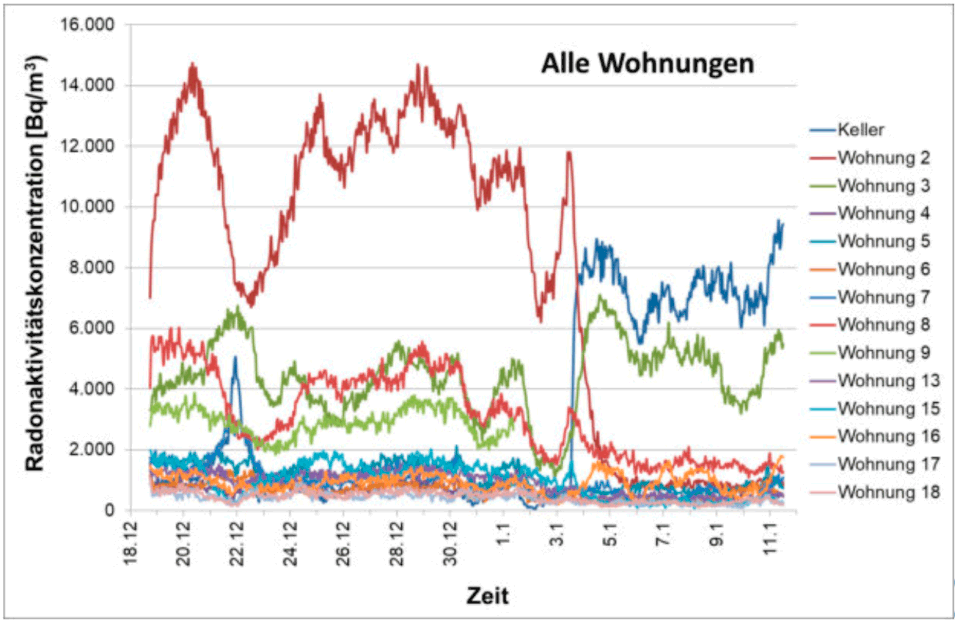Radon Protect Plus

Project title: Entwicklung und Test des Radon-Messgeräts Radon Protect Plus zum Schutz der Bevölkerung vor Radon in Wohnungen, Schulen und an Arbeitsplätzen als Beitrag zur Umsetzung des Strahlenschutzgesetzes (StrlSchG) in Deutschland
(Project title – English translation: Development and test of the radon measuring device Radon Protect Plus to protect the population from radon in flats, schools and workplaces as a contribution to the implementation of the Radiation Protection Act (StrlSchG) in Germany)
Short project description:
Increased radon concentrations generally pose a potential health risk for residents. According to Germany’s new Radiation Protection Act and the new Radiation Protection Regulation, a new obligation to monitor indoor areas came into effect on 31 December 2018, in order to guarantee that the new reference level for radon activity concentration of 300 Bq/m³ on an annual average can be complied with, e.g. by appropriate ventilation measures.
The potential radon sources are although known, their individual relevance is however controversially discussed. The investigation of individual influences on potential radon sources is difficult as the specific influencing factors are coupled with each other. Within the context of a preceding feasibility analysis, the impact of temporary meteorological factors has been investigated precluding ventilation and undefined radon exhalation. The aim of the Radon Protect project is the development of innovative solutions for measuring indoor radon as well as concentration-controlled ventilation concepts. This includes the development and evaluation of radon meters as well as of specific ventilation modules in order to protect residents from critical radon concentrations in private and public spaces. Measurements will be carried out at several pilot sites in the Ore Mountains region (Erzgebirge). Project partners will contribute their technical and modelling expertise to determine actual radon levels in order to keep homes, schools and workplaces radon-free using innovative measuring instruments and ventilation systems. These will include optical and acoustic warnings for users, sending electronic messages to SmartHome systems or mobile phones, for example, and radio-controlled new ventilation technology. The developed radon meters and the ventilation modules will be evaluated and optimised. Modelling is focussed on the behaviour of the radon concentration in buildings, depending on variables such as barometric air pressure, temperature, solar radiation, building heating as well as wind pressure, and the efficiency of ventilation technologies controlled by radon activity concentration. At the end of the joint project, there will be an energy-efficient solution which complies with the statutory radon reference level.
Project duration: 07/18 – 06/19
Funding organisation: Saxon State Office for Environment, Agriculture and Geology (LfULG)
Project partners:
- Bergsicherung Schneeberg GmbH & Co. KG
- Helmholtz Centre for Environmental Research – UFZ
- inVENTer GmbH, Löberschütz
- Saxon State Office for Environment, Agriculture and Geology (LfULG, Department of Radiation Protection) – coordinator
- Sarad GmbH, Dresden
At the Department of Environmental Informatics, research for this project is being conducted at the workgroup Groundwater Systems.
Project website: not available
